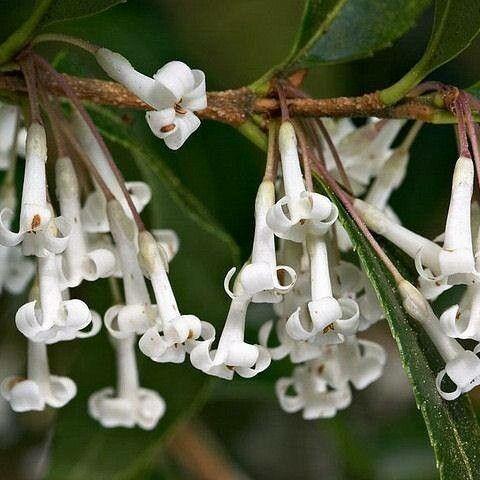
sweet olive
Osmanthus suavis
Cycle:
Perennial
Watering:
Average
Hardiness Zone:
8 - 9
Flowers:
Flowers
Sun:
Full sun,part shade
Leaf:
Yes
Growth Rate:
Low
Maintenance:
Moderate
Care Level:
Medium
watering
The sweet olive (Osmanthus suavis) is an evergreen shrub that favours moist, well-draining soil and needs little pruning to keep it looking its best. To maintain optimal health, it should be watered monthly. During particularly hot and dry periods, it may need to be watered every 2 weeks. To avoid overwatering, use a garden trowel or soil probe to check the soil's moisture. When the soil is dry 1 inch below the surface, it's time to water the sweet olive. When watering, be sure to evenly moisten the soil, but avoid overwatering which can cause root rot or fungal diseases.
sunlight
Sweet olive (Osmanthus suavis) thrives best when grown in full sun to partial shade. In general, the more sun exposure the better. Sweet olive plants prefer at least 6 hours of direct sunlight each day, with the ideal amount being between 8 and 10 hours of full sun throughout the day. Too little sunlight can cause the plants to produce fewer blossoms than desired. However, too much direct sunlight can lead to sun scald and burned leaves. Therefore, finding the right balance of sunlight for sweet olive plants is important.
pruning
Sweet olives (Osmanthus suavis) should usually be pruned during late winter or early spring, before new growth begins. Pruning should be selective, focusing on dead, diseased or damaged branches. Avoid heavy pruning since it can damage the tree’s health and reduce blooming. Sweet olive trees respond well to natural, light pruning. To keep the trees tidy, remove errant branches that don’t match the desired shape, or prune back shoots that reach too far out over a lawn or walkway. In general, sweet olives should be lightly pruned just after flowering, if any major pruning is needed. To encourage flowering, lightly prune the tips of young shoots.
